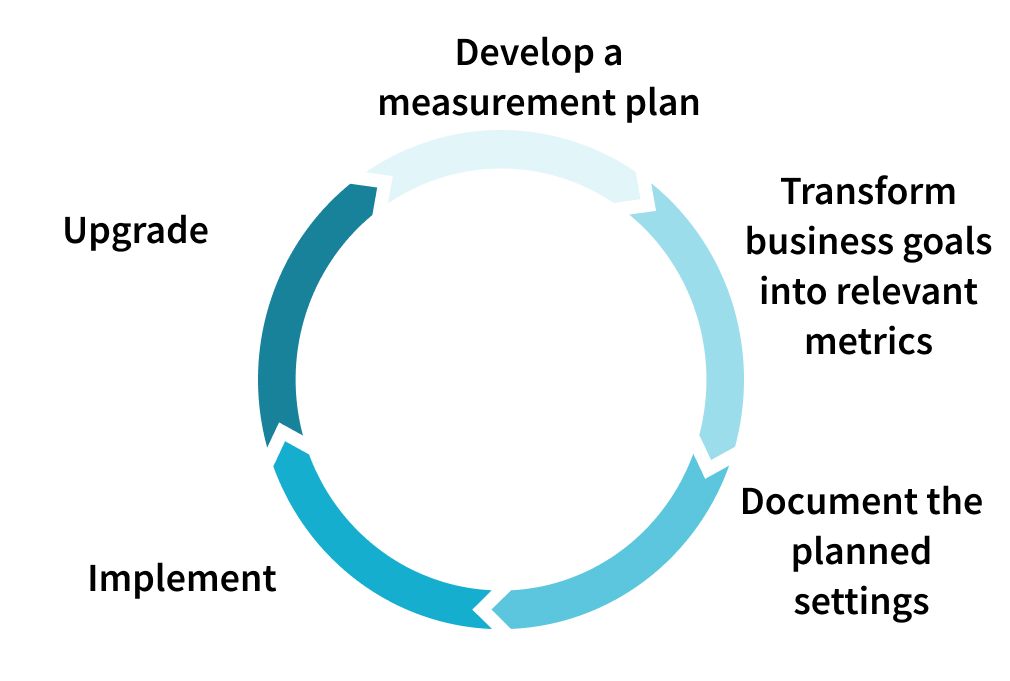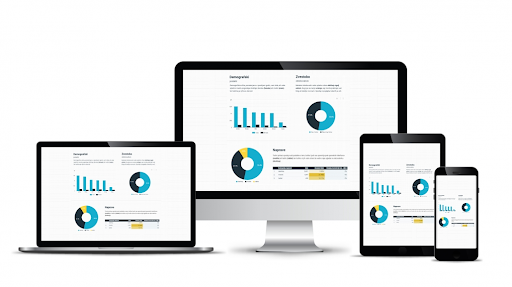Step 3: Document the agreed upon settings
It is prudent to clearly document or describe the agreed upon idea before implementing it in the measuring plan. The scope and structure of this important document depend on the project complexity and the number of intended measurements. It is essential however that the goals and events are clearly defined, meaning it is evident from the plan, which goal/event belongs to which category and what needs to happen for it to be fulfilled.
A detailed and systematic measuring plan has many advantages.
- It allows for greater transparency, as individual parties do not need to check the Analytics or Tag Manager settings to understand which goals are analysed and how the website’s effectiveness is measured. This is especially helpful to employees who are not as accomplished in working with analytical and advertising tools or do not have access to them (external contractors etc.).
- It facilitates the onboarding of potential new employees that were not present during the planning phase but need an overview of the configuration to perform their work effectively.
- It helps advertisers to better understand the website’s goals and align their advertising campaigns accordingly.
Step 4: Implement
After careful planning it is time for the most technically challenging step: implementation. The proposed configuration needs to be transformed into actual settings, which includes adjustments of the website’s source code and work with analytics tools, such as for example Google Tag Manager.
Here we really need to stress that even the most perfect and individually adjusted measuring plan will not be effective if the measuring will not be set up correctly or if the displayed information will not show the real situation. Therefore, it is crucial to entrust this part of the process to an experienced professional, regardless if it’s a specialist within a company or an external digital profession who joins the project from a specialised agency.
Step 5: Monitor and upgrade
As we stressed before, appropriate and correctly set up conversions are essential to make full use of a company’s digital potential. Their monitoring gives us clear insight into the user interaction with the website and allows for an unambiguous conclusion on whether the new website aligns with our business goals or if we need additional upgrades in the form of optimisation or other modifications.
During the analysis, we must therefore avoid getting caught up in looking only at the data on successfully completed conversions. Usually, it is the data indicating more noticeable shortcomings that is most valuable to us. The right measurements allow us to perceive possible errors in due time and correct them as soon as possible.
Those errors can be simply anomalies in the function of particular elements (forms, embedded videos, etc.) or incorrectly presented content. Diligent monitoring and responding to negative feedback is therefore also important or even more important than the confirmation we obtain from successful results.
In addition, it must be noted that the nature of the web and the interaction of users with the website are constantly in flux. Therefore, the ability to quickly react to small or large changes in online behaviour that are noted through the changes in the area of conversions is one of the key competitive advantages of goal monitoring.
And last but not least: each adjustment based on measuring the website’s success additionally optimises the website, as it improves its opportunity to rank better in search results. Search engines prioritise websites or web pages that present products or services to customers in an efficient way and thus more likely lead to conversion.
SEO = taking care of your business
The above paragraph clearly shows that website optimisation does not rest solely on keywords and backlinks, but also on the basis of website upgrades that are in accordance with the wishes, requirements and preferences of its users. The website’s business success is oftentimes mirrored in its organic ranking, as a completed conversion gives search engines a clear sign that a visitor found what they were looking for on the site.










